House Competitions
Everyone at Hargest belongs to a house, either Watson (blue), Menzies (green), Thomson (red) or Hamilton (yellow). The house competition involves athletics, house choirs, swimming sports, cross country, kapa haka and public speaking.
The elected house captains also continue the rivalry with lunch-time competitions in activities like volleyball, basketball, tug-of-war and handball.
Heads of House
The Staff Heads of House are the figureheads for each house and provide additional support to the Deans and Form Teachers. They are responsible for a wide range of sporting and cultural activities, organise the House Competition, run the Peer Support programme and the Student Councils. They assist the Deans in the welfare and progress of students in their respective houses by providing academic and pastoral support.
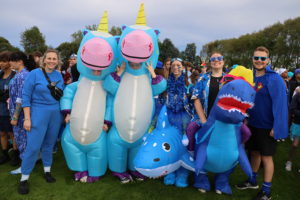
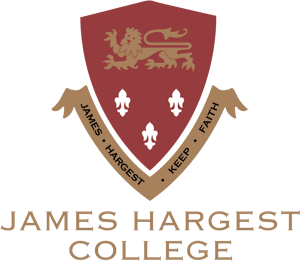
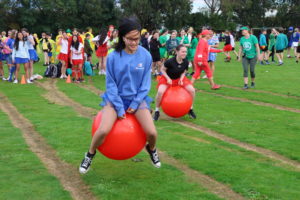

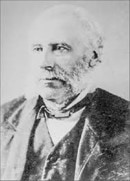 Is named after John Turnbull Thomson (1821 – 1884) who made the first survey of Southland and Otago and became New Zealand’s first Surveyor-General. John was born in Northumberland, England. Engineer (Newcastle upon Tyne). Surveyor of Singapore City. He emigrated to New Zealand in 1857 and was employed by Captain Cargill as Chief Surveyor for Otago Province. His first duty was to layout the site of Invercargill, the plan of which is exactly the same today. John explored and surveyed the great Southland Rivers and also was involved in surveying the earliest road link to Dunedin. He went on to become Mayor of Invercargill, a writer and an amatuer landscape painter. He lived in Invercargill in the property called “Linnel,” in Albert Street. He died at home in 1884, and is buried in the family vault at St John’s Cemetery, Waikiwi.
Is named after John Turnbull Thomson (1821 – 1884) who made the first survey of Southland and Otago and became New Zealand’s first Surveyor-General. John was born in Northumberland, England. Engineer (Newcastle upon Tyne). Surveyor of Singapore City. He emigrated to New Zealand in 1857 and was employed by Captain Cargill as Chief Surveyor for Otago Province. His first duty was to layout the site of Invercargill, the plan of which is exactly the same today. John explored and surveyed the great Southland Rivers and also was involved in surveying the earliest road link to Dunedin. He went on to become Mayor of Invercargill, a writer and an amatuer landscape painter. He lived in Invercargill in the property called “Linnel,” in Albert Street. He died at home in 1884, and is buried in the family vault at St John’s Cemetery, Waikiwi.
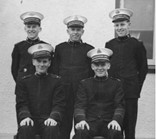

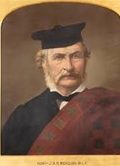 Is named after James Alexander Menzies (1821-1888) who was a Doctor of Medicine and the Father of Southland. Born in Kinlock Rannoch Perthshire, Scotland, he followed his father’s profession by becoming a doctor. James emigrated to New Zealand in 1853 and became a Runholder (38,000 acres) on lower Mataura. Due to no infrastructure (roads/rail) he was forced to abandon his holding. James was a leader of the separatist movement to sever Southland from Otago. He was the first Superintendent of the new province in 1861 (Father of Southland). James helped build a railway from Invercargill to Bluff and the Tramway (The Great North Road) to Winton. He always maintained loyalty to Southland as a region. James died in 1888 and is buried in Wyndham. A political opponent once said of him, “No mean action, no dishonest thought could have found harbour in his mental calibre”.
Is named after James Alexander Menzies (1821-1888) who was a Doctor of Medicine and the Father of Southland. Born in Kinlock Rannoch Perthshire, Scotland, he followed his father’s profession by becoming a doctor. James emigrated to New Zealand in 1853 and became a Runholder (38,000 acres) on lower Mataura. Due to no infrastructure (roads/rail) he was forced to abandon his holding. James was a leader of the separatist movement to sever Southland from Otago. He was the first Superintendent of the new province in 1861 (Father of Southland). James helped build a railway from Invercargill to Bluff and the Tramway (The Great North Road) to Winton. He always maintained loyalty to Southland as a region. James died in 1888 and is buried in Wyndham. A political opponent once said of him, “No mean action, no dishonest thought could have found harbour in his mental calibre”.
 Is named after Mrs Ellenor Watson and Mr Stephen Watson (1803 – 1895) who was a successful pioneer who supported the whaling stations in Riverton. Stephen was born in Deptford London in 1803 and emigrated to Sydney in 1820. Stephen joined a whaling ship working at Jacob’s River Whaling Station from 1838 to 1842. Watson and his bride, Bridget Watson, settled in South Riverton (the family are still there today) and Biddy, as his wife was affectionately known, was the only European woman living in Murihiku until 1844. The Watson’s supplied whalers from their property until 1857 (a year after Invercargill was officially established). The Watson’s quitted storekeeping, which they were awarded a property of 8000L (20,000 areas) on the lower Aparima, just above Riverton. A successful Western Southland pioneer, Stephen Watson clearly thrived in this healthy rural environment as he was in his 93rd year when he did in 1895.
Is named after Mrs Ellenor Watson and Mr Stephen Watson (1803 – 1895) who was a successful pioneer who supported the whaling stations in Riverton. Stephen was born in Deptford London in 1803 and emigrated to Sydney in 1820. Stephen joined a whaling ship working at Jacob’s River Whaling Station from 1838 to 1842. Watson and his bride, Bridget Watson, settled in South Riverton (the family are still there today) and Biddy, as his wife was affectionately known, was the only European woman living in Murihiku until 1844. The Watson’s supplied whalers from their property until 1857 (a year after Invercargill was officially established). The Watson’s quitted storekeeping, which they were awarded a property of 8000L (20,000 areas) on the lower Aparima, just above Riverton. A successful Western Southland pioneer, Stephen Watson clearly thrived in this healthy rural environment as he was in his 93rd year when he did in 1895.
